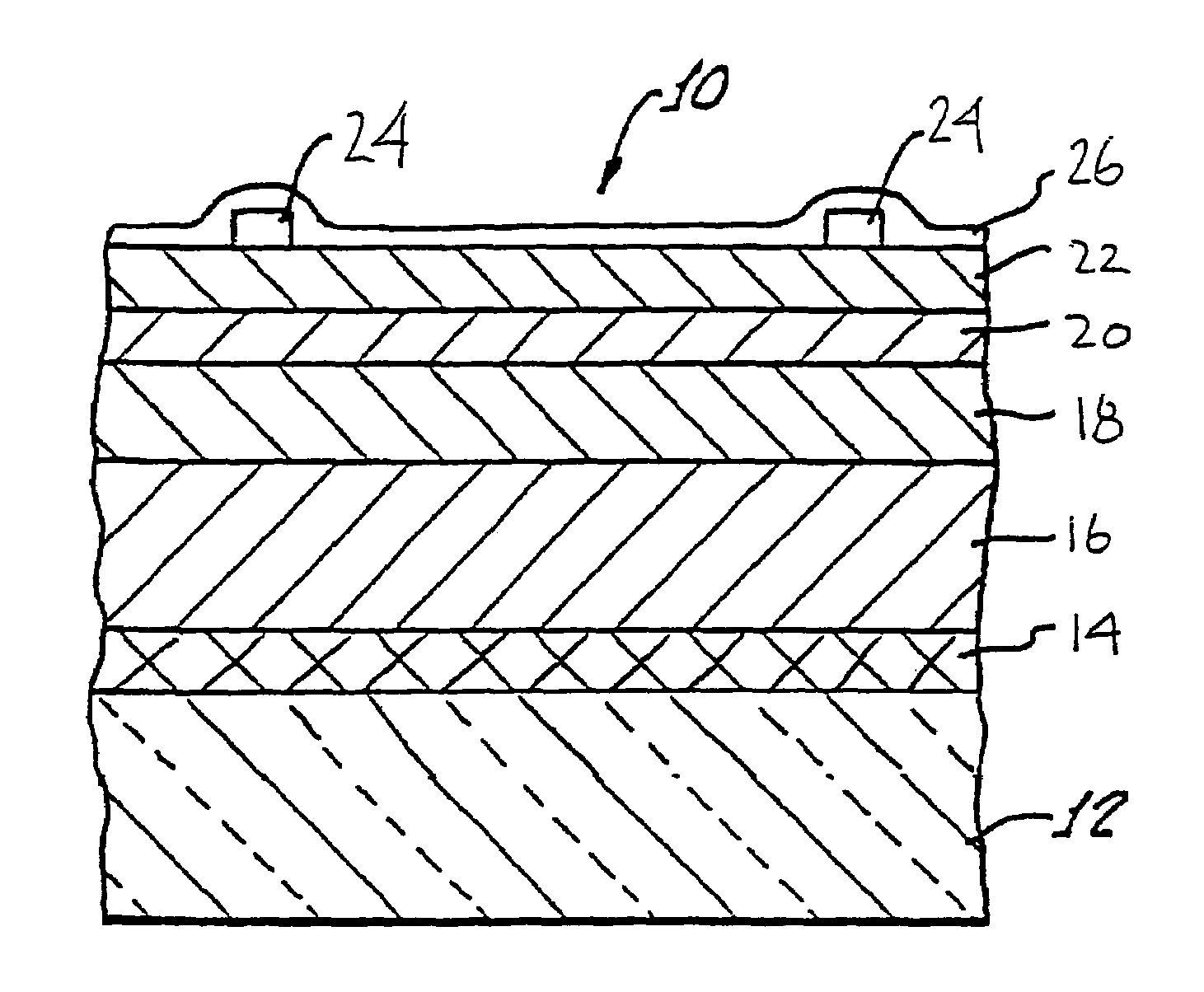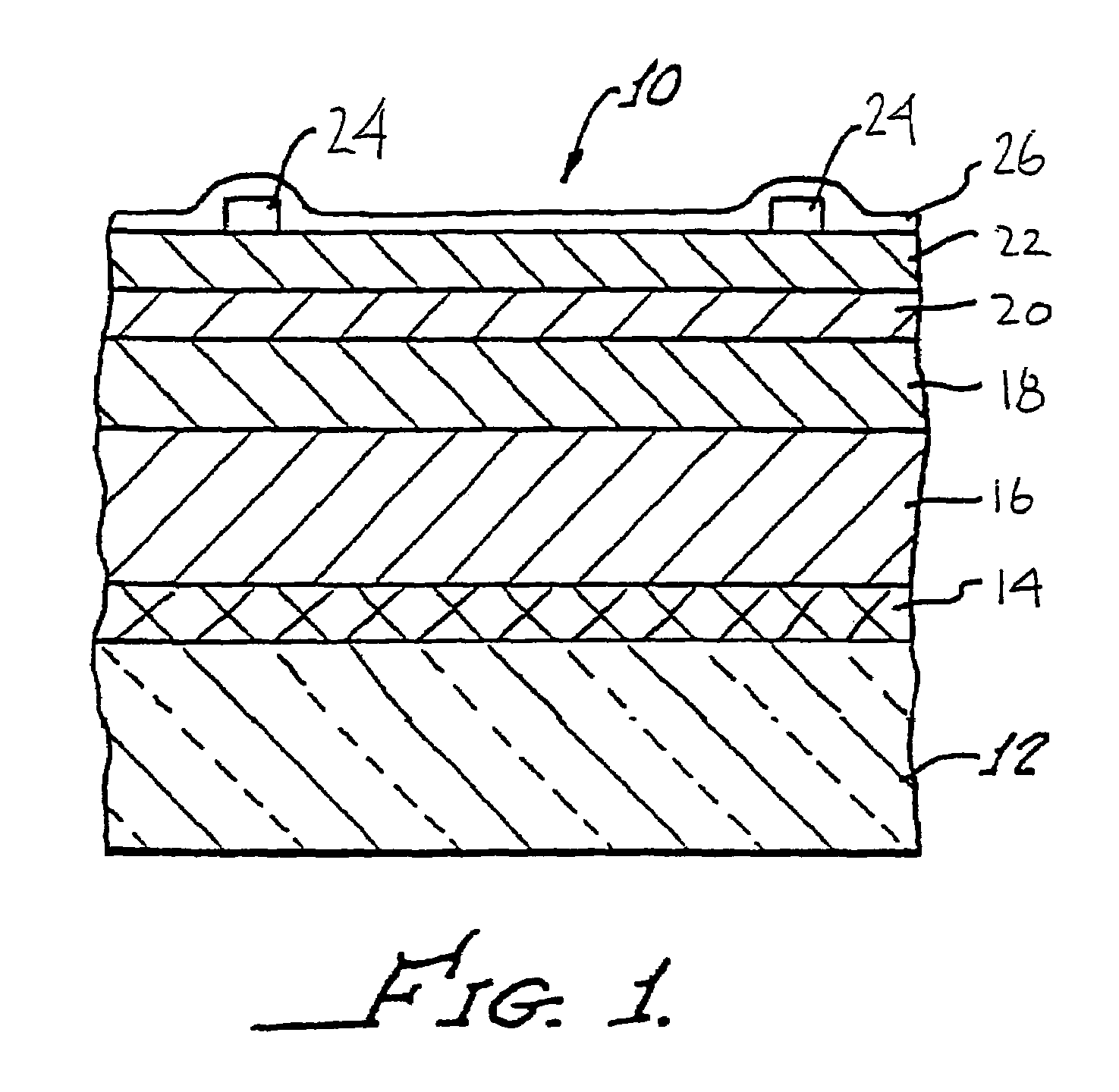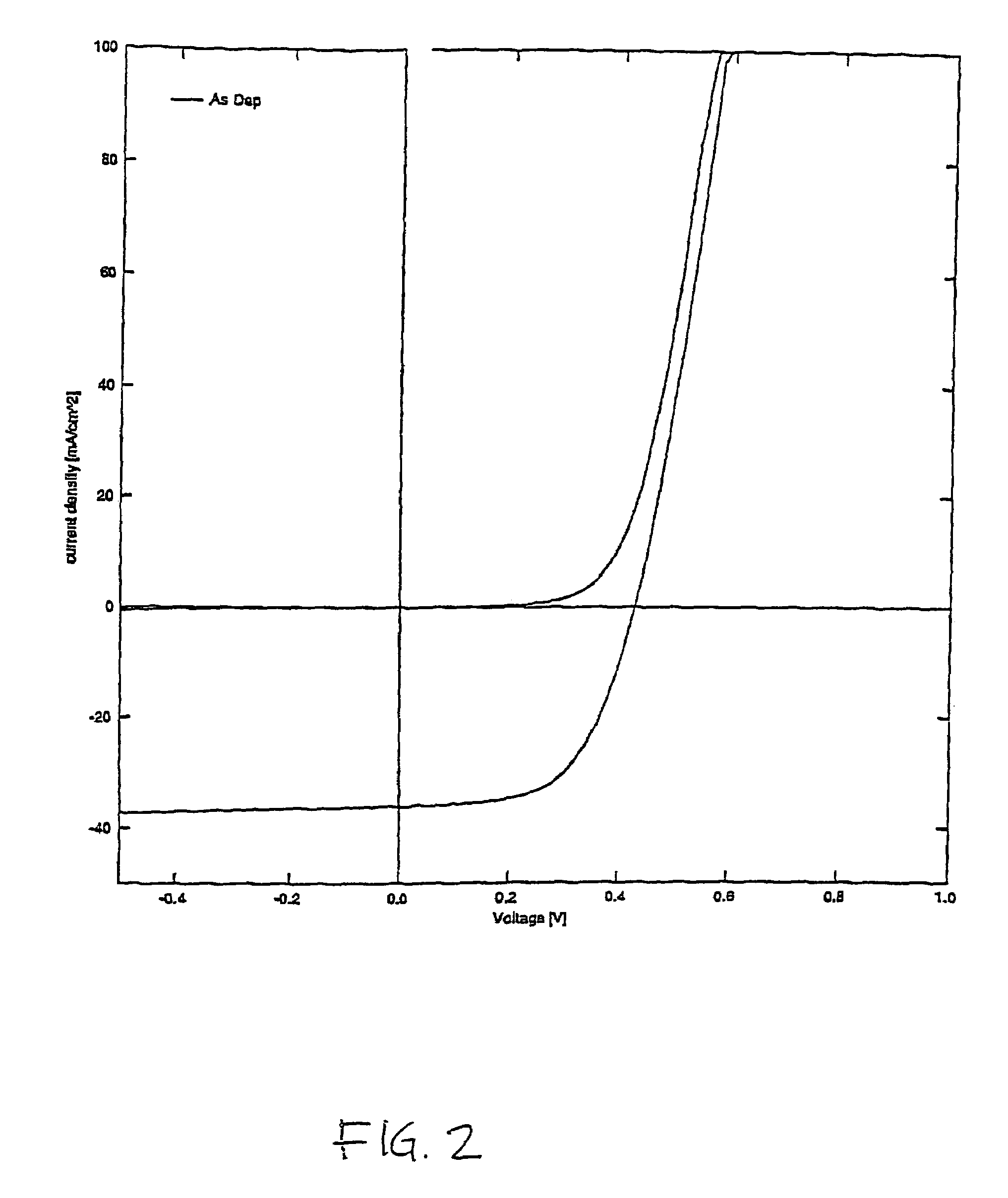Preparation of CIGS-based solar cells using a buffered electrodeposition bath
a technology of cigs and solar cells, applied in photovoltaic energy generation, semiconductor devices, coatings, etc., can solve the problems of dwindling availability no ideal material that may be used to capture sunlight's broad energy spectrum, and high cost of silicon-based solar cells
- Summary
- Abstract
- Description
- Claims
- Application Information
AI Technical Summary
Benefits of technology
Problems solved by technology
Method used
Image
Examples
example 1
[0034]A thin film having a precursor layer comprised of copper-indium-gallium-selenium was deposited onto a glass substrate having molybdenum layer deposited thereon. The thin film layer was obtained by electro-deposition. The electro-deposition bath is prepared by adding 10 gm of pHydrion™ buffers (Aldrich, St. Louis, Mo., catalog #23,901-1), which contains potassium biphthalate and sulphamic acid, was dissolved in 800 ml water. A solution having 0.6 gm CuCl2, 1 gm InCl3, 0.8 gm GaCl3, 1 gm H2SeO3, and 10 gm LiCl was dissolved in 200 ml water. The metal ion solution and buffer solution were then mixed together. A three electrode system was used to deposit the precursor layer on the glass / Mo substrate wherein the glass / Mo substrate was used as the working electrode, platinum gauze was used as the counter electrode, and platinum was used as the pseudo-reference electrode. The electro-deposition voltage was at least 0.5 V. More particularly, a DC voltage of 0.9 V was applied for appro...
example 2
[0037]A photovoltaic cell was prepared according to Example 1, however 2400 Angstroms of indium was added in the PVD step. FIG. 3 shows the current density versus voltage of the finished cell having a 2400 Angstrom indium layer. The photovoltaic cell exhibited an overall efficiency of 9.02%. Other performance parameters for this cell are listed in Table 1 below.
[0038]
TABLE 1JcFill FactorTotal AreaExampleArea (cm2)Voc (mV)(mA / cm2)(%)Efficiency10.430.42936.0458.379.0220.430.44133.7565.289.72
PUM
| Property | Measurement | Unit |
|---|---|---|
| Fraction | aaaaa | aaaaa |
| Fraction | aaaaa | aaaaa |
| Electric potential / voltage | aaaaa | aaaaa |
Abstract
Description
Claims
Application Information
 Login to View More
Login to View More - R&D
- Intellectual Property
- Life Sciences
- Materials
- Tech Scout
- Unparalleled Data Quality
- Higher Quality Content
- 60% Fewer Hallucinations
Browse by: Latest US Patents, China's latest patents, Technical Efficacy Thesaurus, Application Domain, Technology Topic, Popular Technical Reports.
© 2025 PatSnap. All rights reserved.Legal|Privacy policy|Modern Slavery Act Transparency Statement|Sitemap|About US| Contact US: help@patsnap.com



